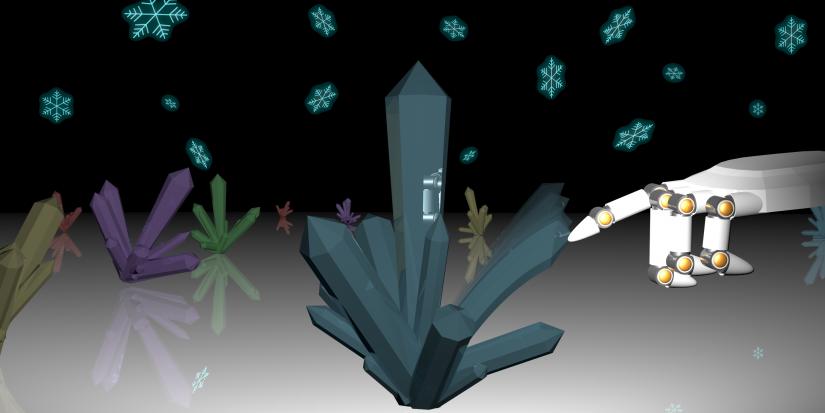Bending diamond is possible, at the nanoscale
Understanding properties of nanostructures such as nanodiamonds is crucial for applications in sensing, defense and energy storage.

Diamond is prized by scientists and jewellers alike, largely for a range of extraordinary properties including exceptional hardness. Now Australian researchers, led by University of Technology Sydney (UTS) physicists, have discovered diamond can be bent and deformed, at the nanoscale at least.
The discovery opens up a range of possibilities for the design and engineering of new nanoscale devices in sensing, defence and energy storage but also shows the challenges that lie ahead for future nanotechnologies, the researchers say.
Lead author of the study published in Advanced Materials, UTS PhD student Blake Regan from School of Mathematics and Physical Sciences, said that carbon based nanomaterials, such as diamond, were of particular scientific and technological interest because, “in their natural form, their mechanical properties could be very different from those at the micro and nanoscale.”
Diamond is the front runner for emerging applications in nanophotonics, microelectrical mechanical systems and radiation shielding. This means a diverse range of applications in medical imaging, temperature sensing and quantum information processing and communication.
“It also means we need to know how these materials behave at the nanoscale - how they bend, deform, change state, crack. And we haven’t had this information for single-crystal diamond,” he said.
The team, that included scientists from Curtin University and Sydney University, worked with diamond nanoneedles, approximately 20nm in length, 10,000 times smaller than a human hair. The nanoparticles were subjected to an electric field force from a scanning electron microscope. By using this unique, non-destructive and reversible technique the researchers demonstrated that the nanoneedles, also known as diamond nanopillars, could be bent in the middle to 90 degrees without fracturing.
The researchers also demonstrated that as well as this elastic deformation a new form of plastic deformation was observed when the nanopillar dimensions and crystallographic orientation of the diamond occurred together in a particular way.
Chief Investigator, UTS Professor Igor Aharonovich, said the result was the unexpected emergence of a new state of carbon (termed 08-carbon) and demonstrated the “unprecedented mechanical behaviour of diamond.”
“These are very important insights into the dynamics of how nanostructured materials distort and bend and how altering the parameters of a nanostructure can alter any of its physical properties from mechanical to magnetic to optical. Unlike many other hypothetical phases of carbon, 08-carbon appears spontaneously under strain with the diamond-like bonds progressively breaking in a zipper-like manner, transforming a large region from diamond into 08-carbon.
“The potential applications of nanotechnology are quite diverse. Our findings will support the design and engineering of new devices in applications such as super-capacitors or optical filters or even air filtration,” he said.
Funding
ARC, Asian Office of Aerospace Research and Development, Office of Naval Research Global
Publication
Plastic Deformation of Single‐Crystal Diamond Nanopillars
Blake Regan, Alireza Aghajamali, Johannes Froech, Toan Trong Tran, John Scott, James Bishop, Irene Suarez‐Martinez, Ying Liu, Julie M. Cairney, Nigel A Marks, Milos Toth, Igor Aharonovich
